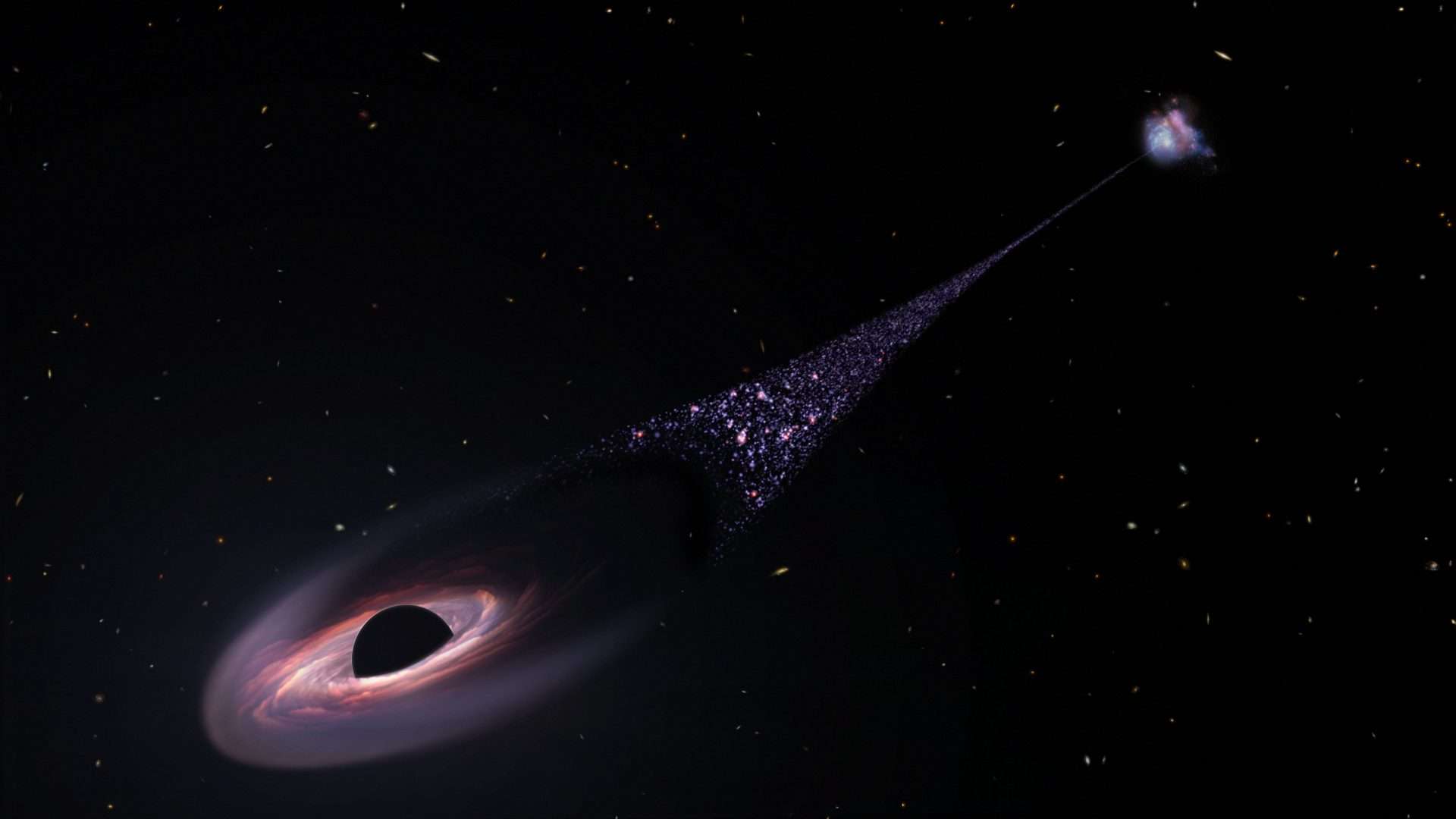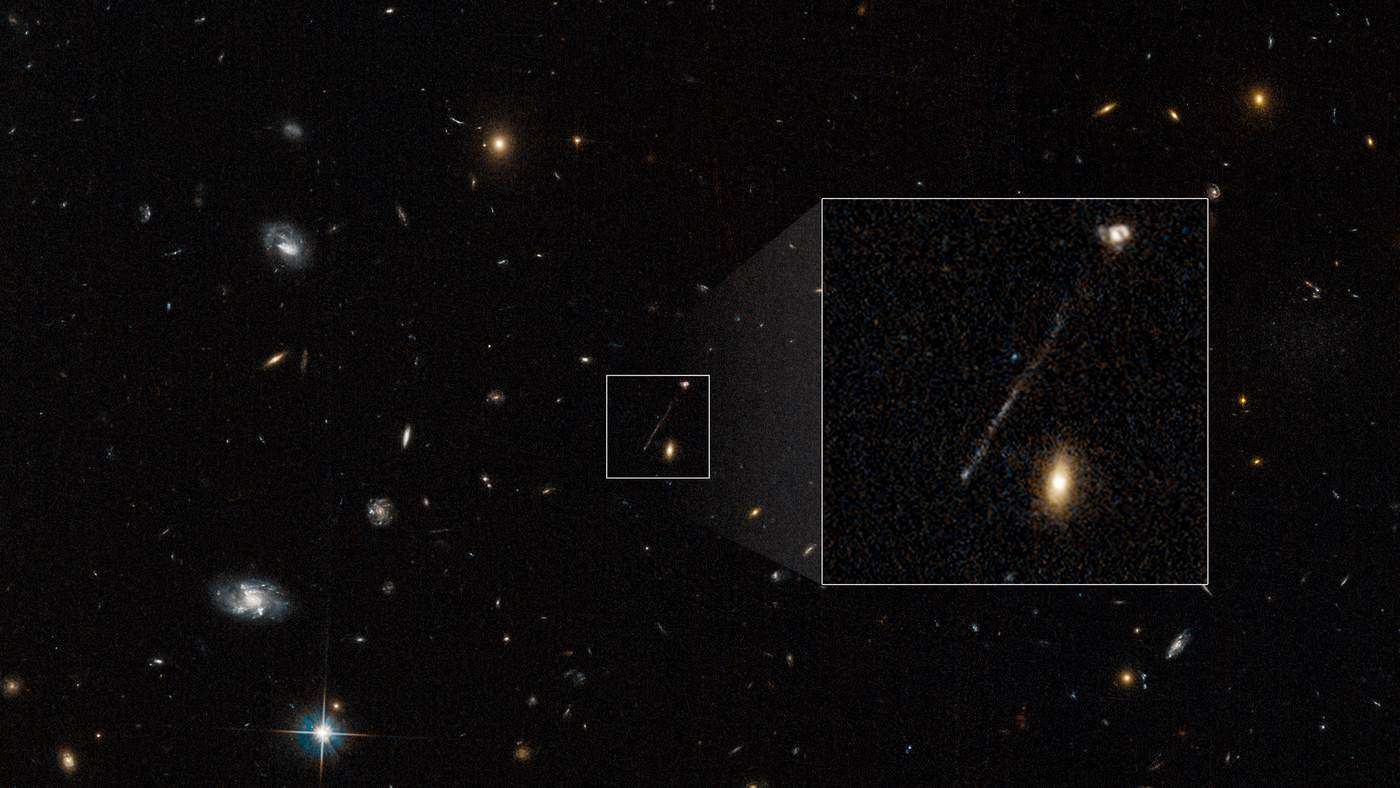NASA is Offering $25,000 for Pieces of a Meteorite that Just Fell in Maine
The Maine Mineral and Gem Museum in Bethel is offering a $25,000 reward for the recovery of any pieces 1 kilogram (2.2 pounds) or larger.

Perhaps the most astonishing phenomenon ever discovered by astronomers was recently observed "accidentally" by the Hubble Space Telescope.
What Hubble saw was a supermassive black hole three times the diameter of our whole galaxy, speeding through the universe so fast that it would pass the Earth and arrive at the Moon in just 14 minutes.
Almost as amazing was what was behind it—a bright "contrail" of newborn stars clearly visible in the telescope image like a colorful scratch on a record. The trail was so unusual that scientists originally dismissed it as the result of a malfunction, but follow-up spectroscopic observations revealed it was a 200,000-light-year-long chain of young blue stars.
Nothing even remotely similar to this has ever been seen before, and scientists are speculating it was the result of a sort of "cosmic billiards" when two or perhaps three large black holes bounced into one another.
"Rather than gobbling up stars ahead of it, like a cosmic Pac-Man, the speedy black hole is plowing into gas in front of it to trigger new star formation along a narrow corridor," NASA press writers reported.
"The black hole is streaking too fast to take time for a snack. Nothing like it has ever been seen before, but it was captured accidentally by NASA's Hubble Space Telescope."

A very bright ball of ionized oxygen can be seen at one end of the column, a result of the black hole's speed of movement.
"Gas in front of it gets shocked because of this supersonic, very high-velocity impact of the black hole moving through the gas. How it works exactly is not really known," said Pieter van Dokkum of Yale University. "This is pure serendipity that we stumbled across it."
While looking for globular star clusters in a nearby dwarf galaxy, van Dokkum spotted the trail of stars and dismissed it as a cosmic ray refracting in the lens of the telescope, but after they removed all cosmic rays, it was still there, prompting a spectroscopy analysis at the Kek Observatories in Hawai'i.
Confirmations of the star formation in the contrail led to the theory of it being a black hole, which van Dokkum and colleagues then had to explain.
The idea is that two supermassive black holes merged to form a spinning binary black hole system around 50 million years ago. Along came a third galaxy which also had a supermassive black hole in the middle of it, and as it was pulled into the existing binary, the violent gravitational force was so strong that it pinged the third black hole out of its own galaxy and sent it whizzing away.
The original binary may still be intact, or it could have similarly rebounded in another direction like the third one did. There is a feature seen on the opposite side of the host galaxy that might be the runaway binary black hole. Circumstantial evidence for this is that there is no sign of an active black hole remaining at the galaxy's core.
Follow-up observations are planned with the more sensitive James Webb Space Telescope, and the research was published in Astrophysical Journal Letters.
SHARE This Never-Before-Witness Phenomenon With Your Friends…
Be the first to comment